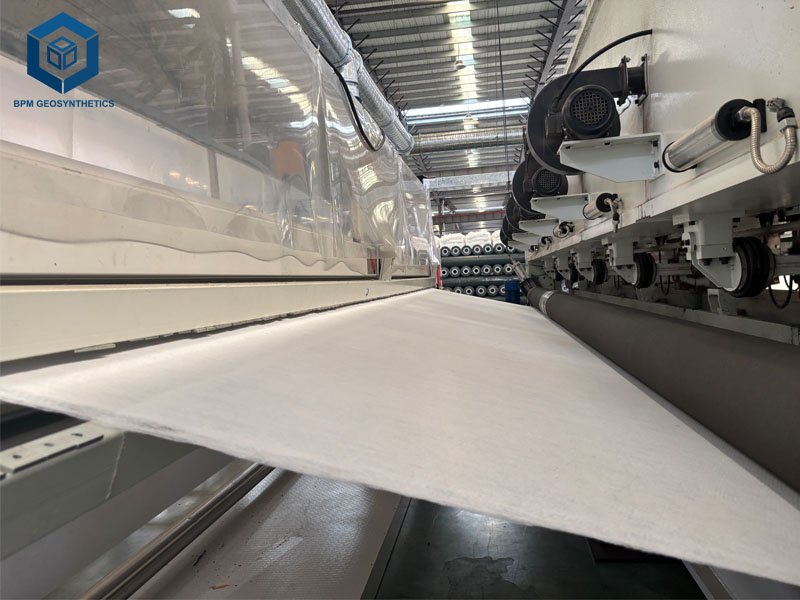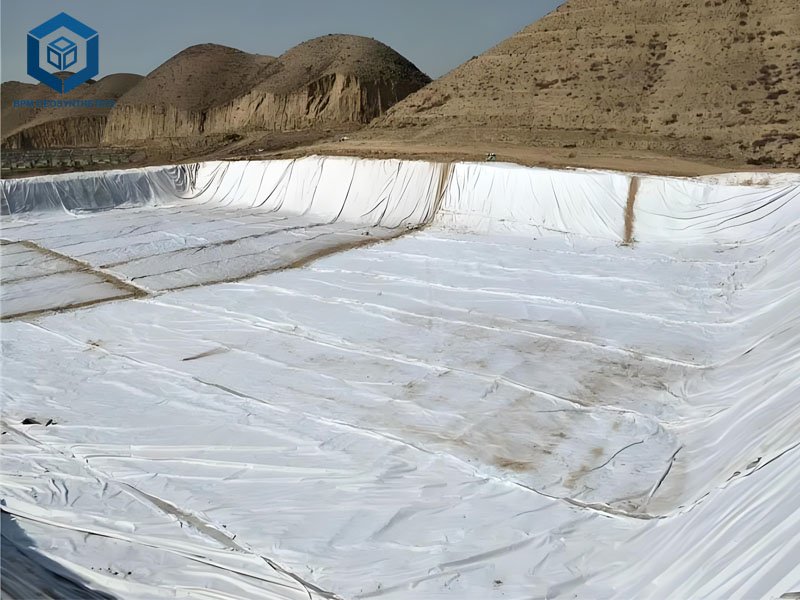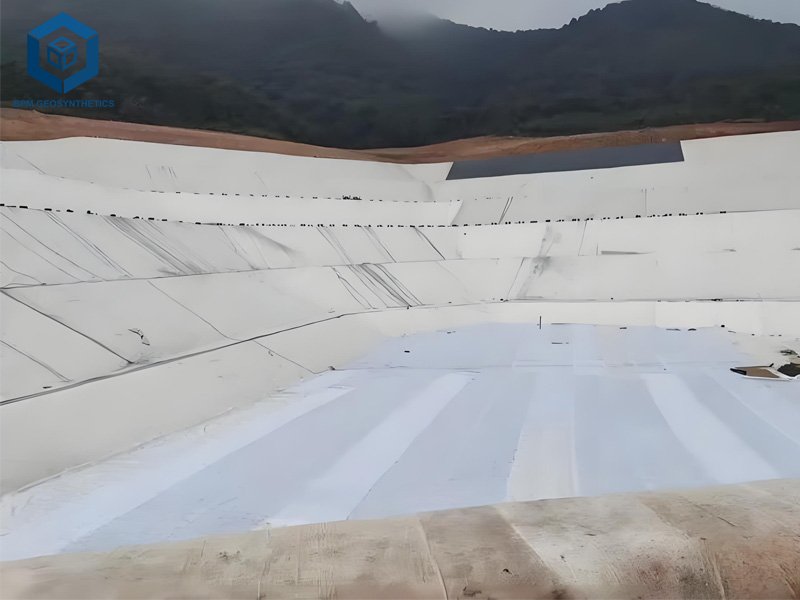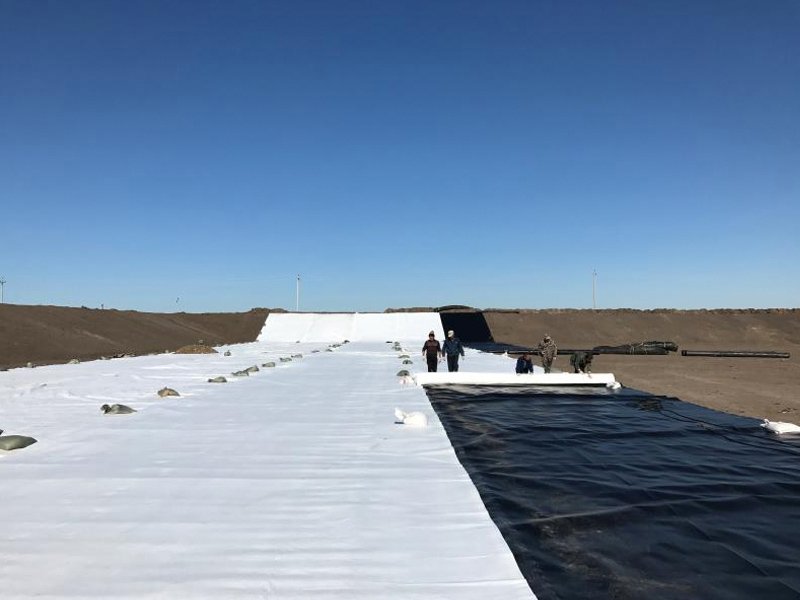Geotextile membranes are indispensable in civil engineering, landscaping, and environmental projects, offering solutions for soil stabilization, drainage, filtration, and erosion control. With global infrastructure investments projected to reach USD 9.5 trillion by 2030, geotextiles are increasingly critical for sustainable construction. However, their cost can vary significantly, influenced by material type, manufacturing processes, and project requirements. This comprehensive guide explores the Geotextile Membrane Cost Per m2 in 2025, providing detailed insights, specifications, and actionable tips to optimize your budget while ensuring high performance. Whether you’re a contractor, engineer, or landscaper, understanding these costs will help you make informed decisions.
1. What Is a Geotextile Membrane?
Geotextile membranes are permeable fabrics made from synthetic materials like polypropylene (PP), polyester (PET), or polyethylene (PE). They are designed to enhance soil stability, manage water flow, and prevent erosion in applications such as road construction, drainage systems, and landscaping. According to ASTM D4439, geotextiles improve soil strength by 20–40%, reducing construction costs by 10–20%. Their versatility and durability make them essential for projects ranging from highways to garden pathways.
Types of Geotextile Membranes
Geotextile membranes are broadly categorized into woven, non-woven, and specialty types, each with distinct applications and cost implications:
- Woven Geotextiles: Made by weaving PP or PET threads, these offer high tensile strength (50–150 kN/m) for soil separation and reinforcement in roads and embankments. Price range: $0.30–$7.50/m².
- Non-Woven Geotextiles: Produced via needle-punching or thermal bonding, these are ideal for filtration and drainage, with tensile strengths of 10–50 kN/m. Price range: $0.15–$5.40/m².
- Specialty Geotextiles: Include geotextile tubes or bags with UV resistance or chemical stability, used in landfills or coastal protection. Price range: $0.50–$54.00/m².
In 2024, non-woven geotextiles held a 60% market share due to their cost-effectiveness and versatility in drainage applications.
Key Specifications and Parameters
Geotextile performance hinges on several technical parameters that also influence pricing:
- Tensile Strength: Ranges from 10–150 kN/m, with woven geotextiles offering higher strength for heavy-duty applications. For example, Terram T1000 provides 20 kN/m, ideal for road stabilization.
- Gram Weight (GSM): Measured in grams per square meter (100–500 g/m²), heavier fabrics (300–500 g/m²) cost more but offer greater durability.
- Permeability: Vertical permeability coefficients range from 1.0 × 10⁻¹ to 10⁻³ cm/s, ensuring efficient water flow while retaining soil particles.
- UV Resistance: 90% strength retention after 500 hours of exposure (ASTM D4355) is standard for outdoor applications.
Roll Size: Standard rolls are 2.25–4.5 m wide and 50–100 m long, impacting bulk pricing.


2. Factors Influencing Geotextile Membrane Cost Per m2
Geotextile membrane prices range from $0.15 to $54.00 per square meter, driven by several factors. Understanding these helps you estimate costs accurately and optimize project budgets.
2.1 Geotextile Membrane Cost Per m2 – Material Type
The material used significantly affects costs:
- Polypropylene (PP): Lightweight and cost-effective, priced at $0.15–$3.00/m². PP dominates 50% of the market due to its resistance to mildew and rot.
- Polyester (PET): Offers higher tensile strength, priced at $0.50–$5.00/m². Used in heavy-duty applications like embankments.
- Polyethylene (PE): Less common, used in specialty applications, priced at $1.00–$7.50/m².
Raw material price fluctuations, particularly for PP (petroleum-based), increased costs by 8% in 2024 due to supply chain constraints.
2.2 Geotextile Membrane Cost Per m2 – Geotextile Type
Different types cater to specific applications, impacting costs:
- Non-Woven: Cheaper ($0.15–$5.40/m²) due to simpler manufacturing via needle-punching or thermal bonding. Ideal for drainage and filtration.
- Woven: More expensive ($0.30–$7.50/m²) due to weaving processes, offering superior strength for soil stabilization.
- Specialty: Geotextile tubes or UV-resistant fabrics cost $0.50–$54.00/m² due to customized features like chemical resistance.
2.3 Geotextile Membrane Cost Per m2 – Manufacturing Process
Production methods influence costs:
- Needle-Punched Non-Woven: Cost-effective, priced at $0.15–$3.00/m², used for filtration and drainage.
- Thermally Bonded Non-Woven: Slightly higher at $0.30–$4.00/m², offering enhanced durability.
- Woven: Labor-intensive weaving increases costs to $0.30–$7.50/m², providing high tensile strength.
2.4 Geotextile Membrane Cost Per m2 – Project Scale and Order Volume
Bulk purchases reduce costs significantly. For example, orders over 10,000 m² from suppliers like Shandong Dexuda can secure 10–20% discounts. Small-scale projects may face higher per-unit costs due to minimum order quantities (500–5,000 m²).
2.5 Geotextile Membrane Cost Per m2 – Regional and Supplier Variations
Prices vary by region due to labor, transportation, and market dynamics:
- North America: $0.50–$5.00/m², driven by infrastructure demand and high labor costs.
- Asia-Pacific: $0.15–$3.00/m², benefiting from low-cost production in China and India.
- Europe: $0.50–$7.50/m², reflecting stringent quality standards and higher labor costs.
Reputable suppliers like Terram and TCS Geotechnics charge premiums for certified products, while local manufacturers offer competitive pricing but may lack certifications.
2.6 Geotextile Membrane Cost Per m2 – Certifications and Quality Standards
Geotextiles meeting ASTM D4439 or ISO 9001 standards cost 10–15% more but ensure 95% reliability, reducing project risks. Non-certified options are cheaper but may lead to defects, costing $50,000–$200,000 in delays.
3. Geotextile Membrane Price Range in 2025
Based on 2025 market data, geotextile membrane prices range from $0.15 to $54.00 per square meter:
- Non-Woven Geotextiles: $0.15–$5.40/m², with lightweight options (100 g/m²) at $0.15–$0.50/m² and heavy-duty (300–500 g/m²) at $1.00–$5.40/m².
- Woven Geotextiles: $0.30–$7.50/m², with high-strength options for road construction at the higher end.
- Specialty Geotextiles: $0.50–$54.00/m², used in niche applications like landfill liners or coastal protection.
For example, Terram T1000 non-woven geotextiles, priced at $0.50–$2.00/m², are widely used for road stabilization, offering 20 kN/m tensile strength.
Price Comparison by Supplier
- Terram: $0.50–$2.50/m² for T1000 non-woven geotextiles, with 95% reliability for drainage and separation.
- TCS Geotechnics: $0.30–$5.00/m² for woven and non-woven options, resistant to soil microbes.
- Shandong Dexuda: $0.15–$3.00/m², offering bulk discounts and ISO 9001 certification.
- D Projects: $0.45/m² for non-woven geotextiles in India, ideal for small-scale projects.
Bulk orders over 50 m² can reduce costs by 10–20%, and local sourcing cuts transportation expenses by 15%.
4. Market Trends Impacting Geotextile Prices
The global geotextile market, valued at USD 7.1 billion in 2024, is expected to reach USD 11.3 billion by 2032, growing at a CAGR of 6.0%. Key trends influencing prices include:
Sustainability and Eco-Friendly Materials
Eco-friendly geotextiles made from recycled PP or PET are gaining traction, increasing costs by 5–10% due to R&D. For example, TCS Geotechnics’ recycled non-woven geotextiles cost $0.50–$3.00/m² but align with EU sustainability standards.
Infrastructure Growth
Asia-Pacific, with a 40% market share, drives demand due to urbanization projects in China and India. This stabilizes prices at $0.15–$3.00/m² for non-woven geotextiles.
Technological Advancements
Innovations like thermally bonded non-woven geotextiles (e.g., Lotrak 100) enhance filtration, increasing costs by 10–15%. These offer 30% better water flow rates, per ASTM D4491.
Supply Chain Dynamics
Raw material price volatility, particularly for PP, raised costs by 8% in 2024. Geopolitical tensions and shipping delays may further increase prices by 5% in 2025.
5. Geotextile Membrane Applications and Cost Benefits
Geotextile membranes offer significant cost savings compared to traditional methods, reducing material costs by 10–20%. Key applications include:
Road Construction
Non-woven geotextiles like Terram T1000 ($0.50–$2.00/m²) reduce aggregate thickness by 15%, saving $50,000–$200,000 on highway projects.
Drainage Systems
Non-woven geotextiles ($0.15–$5.40/m²) enhance drainage by allowing water flow while preventing soil clogging, extending system lifespans by 5–10 years.
Erosion Control
Woven geotextiles ($0.30–$7.50/m²) stabilize slopes, reducing erosion by 50% and maintenance costs by 20%.
Landscaping
Non-woven geotextiles ($0.15–$2.00/m²) suppress weeds and improve drainage, cutting maintenance costs by 15% in garden projects.


6. How to Optimize Geotextile membrane Cost Per M2
To maximize value and minimize expenses, consider these strategies:
Bulk Ordering
Orders exceeding 10,000 m² from suppliers like Shandong Dexuda can secure 10–20% discounts.
Local Sourcing
Sourcing from regional suppliers like P.D Projects in India ($0.45/m²) reduces transportation costs by 15%.
Choosing Certified Suppliers
Suppliers meeting ASTM D4439 or ISO 9001 standards, like Terram, ensure 95% reliability, avoiding costly delays.
Lifecycle Cost Analysis
High-performance geotextiles like Lotrak 100 ($0.60/m²) reduce aggregate use by 15%, saving 20% on project costs despite higher upfront prices.
Using Design Software
Tools like GeoStudio optimize geotextile selection, reducing material waste by 10%. Contact suppliers for free design consultations.
7. Case Studies: Real-World Cost Examples
Indian Landscaping Project (2024)
P.D Projects supplied 5,000 m² of non-woven geotextiles at $0.45/m² for a garden pathway, reducing weed growth by 90% and saving $10,000 in maintenance over five years.
UK Highway Stabilization (2024)
Terram T1000, priced at $1.50/m², was used for a 20,000 m² highway project, cutting aggregate costs by 15% and saving $150,000.
South African Gabion Installation (2024)
Pavement Materials Group supplied A4 non-woven geotextiles at $0.80/m² for gabion baskets, enhancing drainage and saving $20,000 in erosion repairs.
8. Conclusion
Geotextile membrane prices in 2025 range from $0.15 to $54.00 per square meter, influenced by material, type, manufacturing, and project scale. By leveraging bulk ordering, local sourcing, certified suppliers, and lifecycle cost analysis, you can save 10–30% while ensuring durable, high-performance solutions. For tailored quotes and expert guidance, contact reputable suppliers like BPM Geosynthetics, who meet ASTM and ISO standards. With the geotextile market poised for growth, strategic choices today will optimize budgets and enhance project outcomes for years to come.





